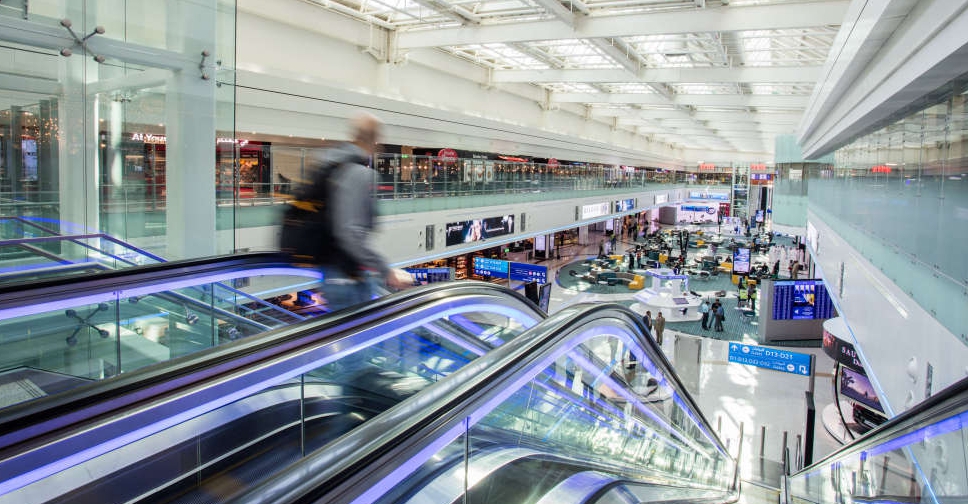
North Korea's latest launch was a huge, new intercontinental ballistic missile (ICBM), state media reported on Friday, in a test leader Kim Jong-Un said was designed to demonstrate the might of its nuclear force and deter any US military moves.
It was the first full ICBM test by nuclear-armed North Korea since 2017, and flight data indicated the missile flew higher and longer than any of North Korea's previous tests, before crashing into the sea west of Japan.
Dubbed the Hwasong-17, the ICBM is the largest liquid-fuelled missile ever launched by any country from a road-mobile launcher, analysts said.
Kim ordered the test because of the "daily-escalating military tension in and around the Korean peninsula" and the "inevitability of the long-standing confrontation with the US imperialists accompanied by the danger of a nuclear war," state news agency KCNA reported.
North Korea's return to major weapons tests capable of potentially striking the United States poses a direct challenge to US President Joe Biden as he responds to Russia's invasion of Ukraine. And it raises the prospect of a new crisis following the election of a new, conservative South Korean administration that has pledged a more muscular military strategy to counter Pyongyang.
South Korea's President-elect Yoon Suk-yeol, who will speak to Chinese President Xi Jinping later on Friday, said North Korea had nothing to gain from provocation. China is North Korea's sole major ally and neighbour.
The launch drew condemnation from leaders in the United States, Japan, and South Korea.
Kim said the test would help convince the world of the modern features of the country's strategic forces.
"Any forces should be made to be well aware of the fact that they will have to pay a very dear price before daring to attempt to infringe upon the security of our country," he said, according to KCNA.
There was no immediate comment from the White House or State Department on Kim's remarks.
NEW SANCTIONS
Responding to North Korea's banned ICBM launch through the United Nations Security Council (UNSC) will be far more difficult now than after the last test in 2017.
World powers on the council are currently at odds over the Ukraine war, making the kind of sanctions that were imposed on North Korea by the UNSC after the 2017 test a far more complicated process.
The UN Security Council will meet publicly at 3:00 pm (1900 GMT) on Friday to discuss the launch. On Thursday, UN Secretary-General Antonio Guterres urged Pyongyang "to desist from taking any further counter-productive actions".
On Thursday, the US State Department announced sanctions on two Russian companies, a Russian and a North Korean individual, and North Korea’s Second Academy of Natural Science Foreign Affairs Bureau for transferring sensitive items to North Korea’s missile programme.
It named the Russian entities as the Ardis Group of Companies LLC (Ardis Group) and PFK Profpodshipnik LLC, and the Russian individual as Igor Aleksandrovich Michurin. It named the North Korean as Ri Sung Chol.
“These measures are part of our ongoing efforts to impede the DPRK’s ability to advance its missile program and they highlight the negative role Russia plays on the world stage as a proliferator to programs of concern,” State Department spokesman Ned Price said in a statement.
NEW MISSILE
Photos released by state media showed a massive missile, painted black with a white nosecone, rising on a column of flame from a launch vehicle.
The Hwasong-17 flew for 1,090 km to a maximum altitude of 6,248.5 km and precisely hit a target in the sea, KCNA reported. Those numbers are similar to data reported by Japan and South Korea.
KCNA called the successful test a "striking demonstration of great military muscle," while Kim said it was a "miraculous" and "priceless" victory by the Korean people.
North Korea first unveiled the previously unseen ICBM at an unprecedented pre-dawn military parade in October 2020, with analysts noting it appeared "considerably larger" than North Korea's last new ICBM, the Hwasong-15, which was test fired in November 2017.
It was displayed a second time at a defence exhibition in Pyongyang in October 2021.
Officials in Seoul and Washington have previously said launches on February 27 and March 5 involved parts of the Hwasong-17 ICBM system, likely in preparation for eventually conducting a full test like the one on Thursday.




 Pakistan closes air space for Indian airlines
Pakistan closes air space for Indian airlines
 India will pursue perpetrators of Kashmir attack to 'ends of earth', Modi says
India will pursue perpetrators of Kashmir attack to 'ends of earth', Modi says
 Zelenskyy cuts short South Africa trip after Russian strike on Kyiv
Zelenskyy cuts short South Africa trip after Russian strike on Kyiv
 Israeli fire kills at least 26 people in Gaza, hits a police station
Israeli fire kills at least 26 people in Gaza, hits a police station



